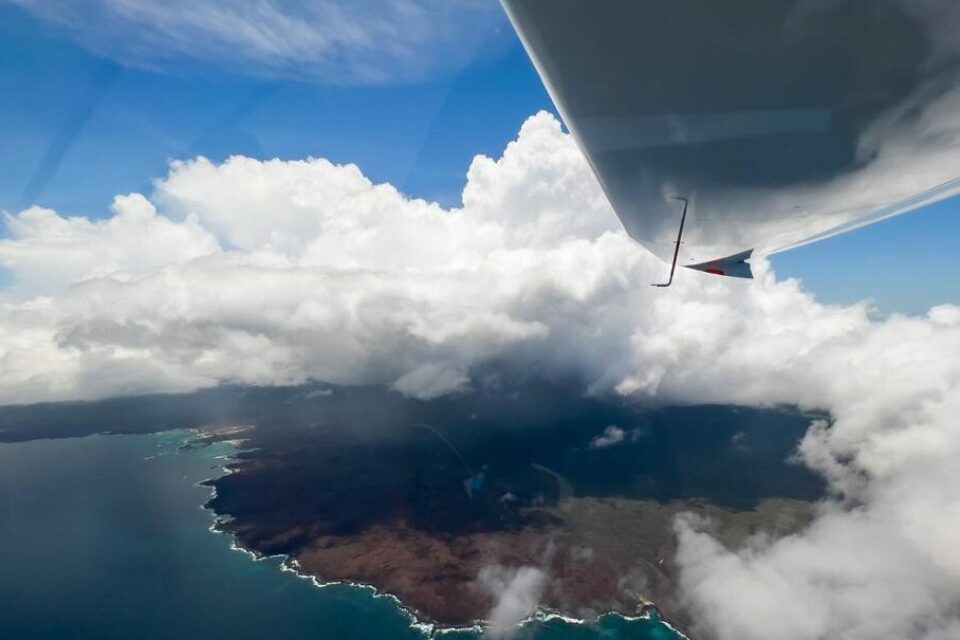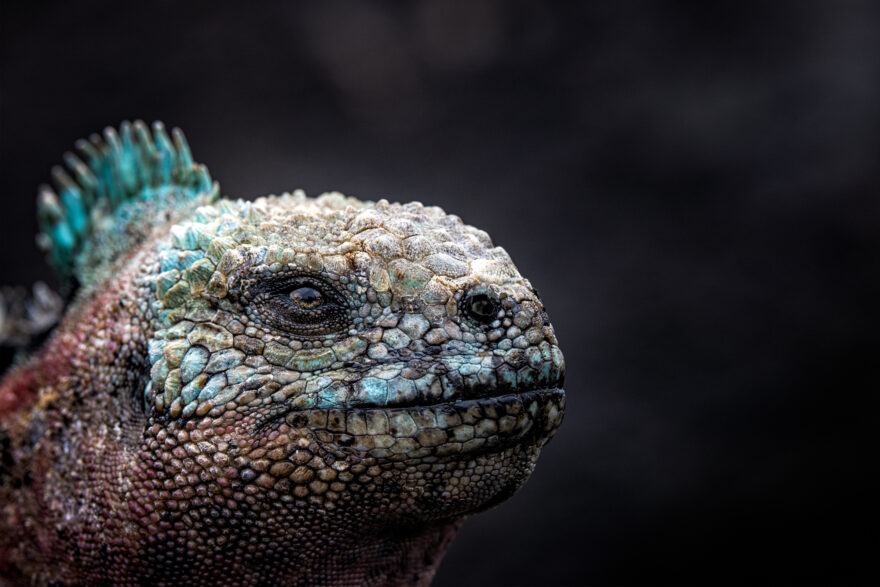

Latest shark nursery news
Earlier this year, a new local Shark and Ray graduate assistant, Daniel Armijos, joined the shark nursery team. He was able to get stuck right in by joining a short field trip in early March, where he was trained in the techniques to catch and handle juvenile sharks.
The Galapagos Marine Reserve (GMR) is home to the highest concentration of sharks in the world, including critically endangered scalloped hammerhead sharks. It also provides crucial pupping grounds for species such as blacktip sharks. These sharks, however, are under threat. It is thought that 100 million sharks are killed globally each year. Many of these are caught either deliberately, usually for their fins, or as incidental bycatch by the fishing industry.
Introduction
As part of our Endangered Sharks of Galapagos programme, we are working to protect shark nursery sites around San Cristobal island for blacktip and scalloped hammerhead sharks. By identifying key pupping sites and improving our understanding of how they are used, the project team can then work with the authorities and local fishers to protect them from fishing and tourism activities.
Latest update
Earlier this year and using GCT funds, a new local Shark and Ray graduate assistant, Daniel Armijos, joined the shark nursery team. He was able to get stuck right in by joining a short field trip in early March, learning the techniques to catch and handle juvenile sharks. The team found plenty of juveniles – in one net alone they caught over 20 baby scalloped hammerheads! In total, they monitored 51 baby sharks in March including blacktips and hammerheads, and he will be assisting with trips in April and May. He also supported the tagging of two tuna and one mola (sunfish).
Daniel was trained to fly a drone, and has since done the March monthly drone survey around San Cristobal. Finally, he helped to deploy drop cameras and BRUVs (baited remote underwater video cameras), and using these techniques, he then had the opportunity to undertake surveys of eight locations around San Cristobal looking for new nursery sites.
Here are some of the highlights from the trip:

Daniel Armijos flying the drone © Diana Pazmino

Drone image of golden rays at Rosa Blanca © Daniel Armijos
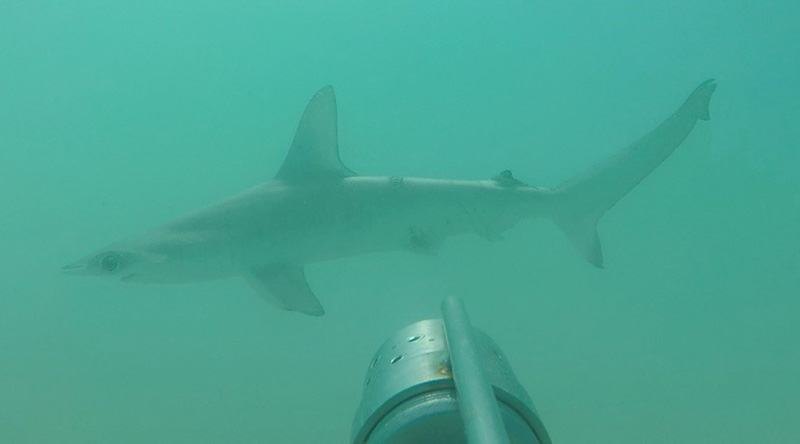
BRUV image of a juvenile scalloped hammerhead shark © Alex Hearn

Daniel learning how to measure a juvenile shark © Alex Hearn
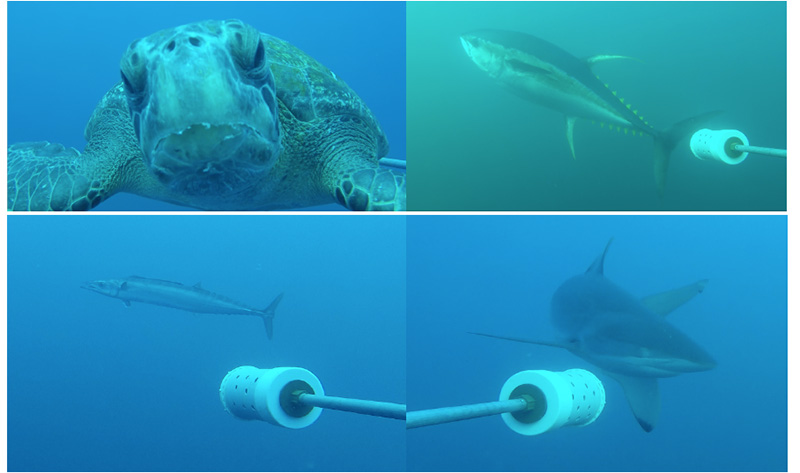
BRUV images including turtle (top R) and tuna (top L) © GSC

Looking for juvenile sharks © Alex Hearn
How can you help?
Please help us conserve the endangered sharks of Galapagos today by giving a donation, adopting a hammerhead shark or joining up as a GCT member.
Related articles

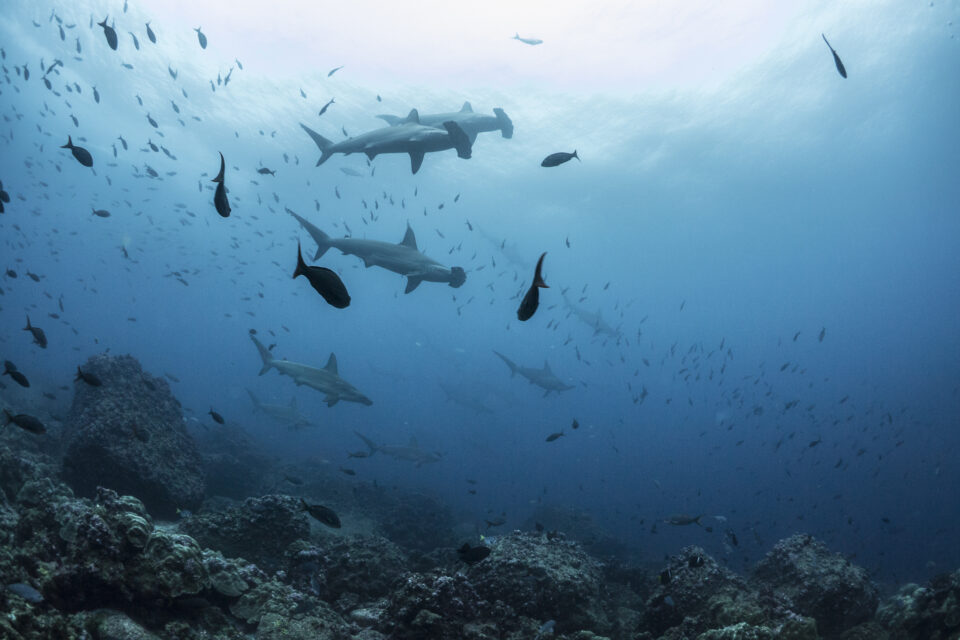
Galapagos marine reserve expansion brings hope - but new management challenges
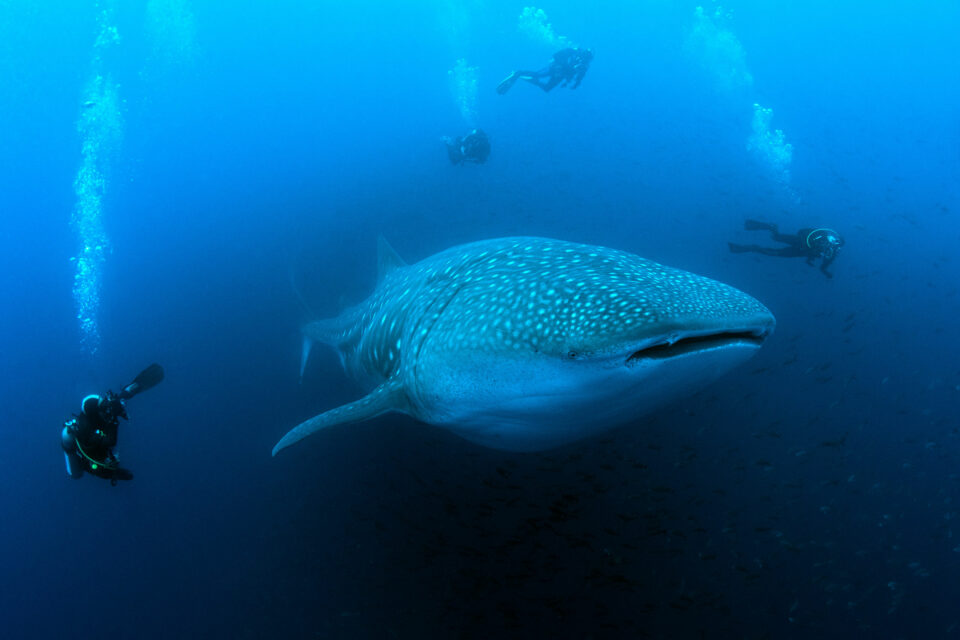
World Oceans Day 2022: Tagging Ocean Giants
